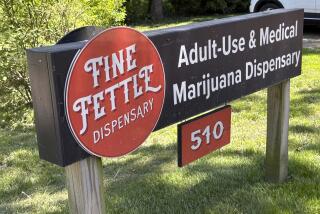Caribbean Rum Trade Blends History With Success
- Share via
ST. CROIX, Virgin Islands — Rum has been produced in the West Indies since the 16th Century-later figuring in an infamous three-way trade involving slavery--and is still big business here.
Made from molasses, a byproduct of sugar cane, the liquor is made almost everywhere in the world where sugar cane is grown.
But the most famous, and perhaps best loved, rums are produced in the Caribbean--in the Dominican Republic, Jamaica, Haiti, Puerto Rico, Antigua, Barbados, Martinique, Trinidad, the British and U.S. Virgin Islands and others.
British sailors were provided daily rations of rum aboard ship from the 1700s until 1970. For many years, Prusser’s Rum, made at Road Town on Tortola in the British Virgins, was the official rum of the British Navy.
One example of rum’s wide appeal is that the “national drink” of Newfoundland, Canada, is a rum imported from Jamaica that is bottled in Newfoundland and popularly called “screech.”
Although some rum was produced in the West Indies during the early colonial period, one form of the so-called triangular trade of the era involved molasses from the islands being shipped north to the distilleries of New England, where it was converted into rum. Some of the liquor was then sent to Africa, where it was exchanged for slaves who were transported to the New World.
Provides Budget Revenue
Rum is the best-known product of the U.S. Virgin Islands, and taxes on it provide $30 million annually toward the operation of the islands’ territorial government--17% of the total budget.
St. Croix, largest of the U.S. Virgin Islands--23 miles long, seven miles at its widest point--once was the richest sugar cane island in the West Indies. But there has been no sugar cane grown here commercially since 1965.
“We import our molasses mainly from Puerto Rico and the Dominican Republic,” explained Gerry Byrnes, 55, vice president of Cruzan Rum Distillery, manufacturers of Cruzan Rum, the major rum producer in the Virgin Islands.
It is a two-century-old fermentation and distilling process and pure Virgin Island rain water that makes Cruzan Rum a leader among Caribbean island rums, insists Byrnes. Rum has been made at the site of the Cruzan distillery site since the 1780s.
Colombus discovered the Virgin Islands on his second voyage in 1493. He gave the chain its name and called this island Santa Cruz, which means Holy Cross. The French came along and continued to call it Holy Cross but in French--St. Croix, instead of Santa Cruz. The French version stuck.
However, the people of St. Croix are called Cruzans (Croo-shuns) from the Spanish version of the name. Hence the name of the Virgin Islands’ best-known product, Cruzan Rum.
The Cruzan Rum Distillery, owned by Schenley Industries since 1963, produced 3 million gallons of rum in 1986, down from 3.3 million in 1982, the distillery’s peak year. But the drop is just “a reflection of the industry,” Byrnes said. “Liquor consumption in general is down.”
Only 20% of the distillery’s production carries the Cruzan label, which is distributed throughout the United States. Most of the rest also goes to the United States but is marketed there under more than 500 different labels, each obligated to state that the rum is a product of the U.S. Virgin Islands. West Germany, Japan and Finland also import Cruzan rum.
For each gallon of Virgin Islands rum sold, the federal government gets $2 in taxes and the Virgin Islands territorial government gets $10.50.
Two Varieties
Cruzan produces two types of rum: gold, which is amber in color and is aged for four years in oak barrels, and white, which is aged only two years. Both retail for about $2 a fifth in St. Croix, where there is no tax, but the price ranges between $7.50 and $8.50 in New York, Chicago and Los Angeles.
In the old days, when sugar plantations dotted St. Croix, rum was produced at several distilleries on the island. Byrnes has a small collection of labels from rums once made on St. Croix--King’s Wharf, Treasure Reef, Gold Coach, Black Bart, Ron Nero, El Tico and so on.
When prohibition ended in 1933, the U.S. government ran several sugar plantations on the island to stimulate the economy and, for a time, the federal government was in the rum business, producing a brand called Government House.
Islands legend has it that President Franklin D. Roosevelt himself designed the label.
More to Read
Sign up for The Wild
We’ll help you find the best places to hike, bike and run, as well as the perfect silent spots for meditation and yoga.
You may occasionally receive promotional content from the Los Angeles Times.






